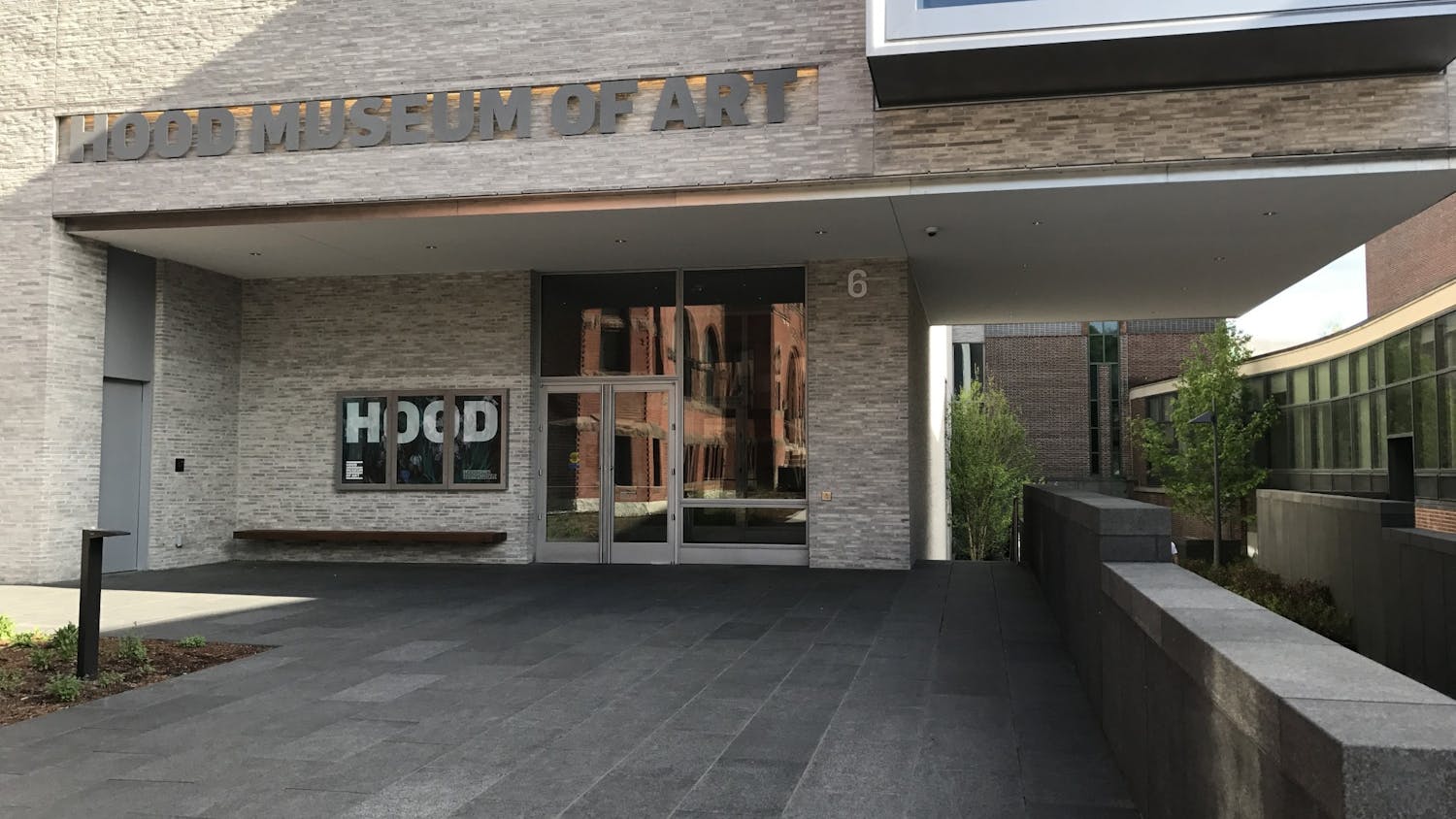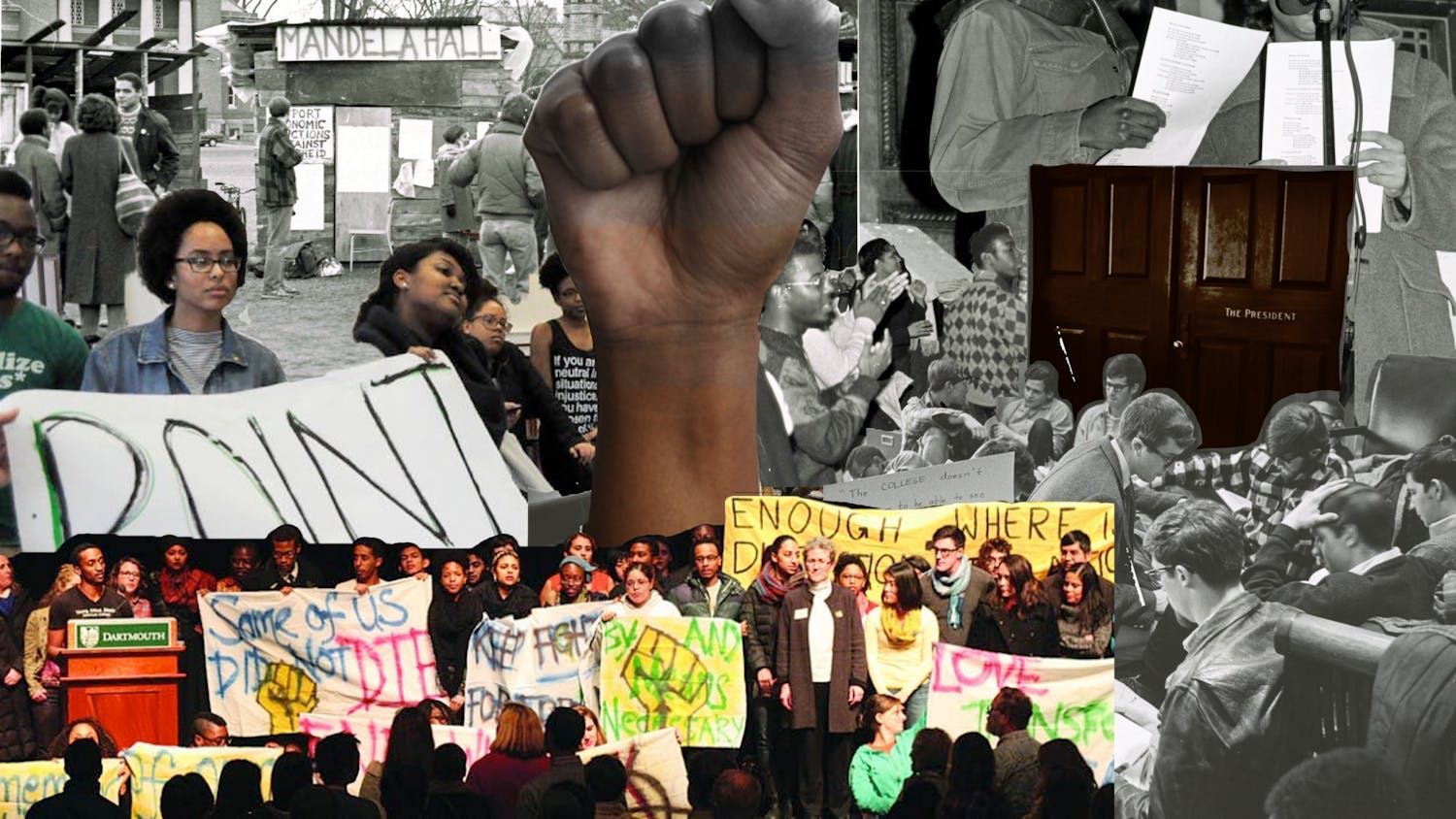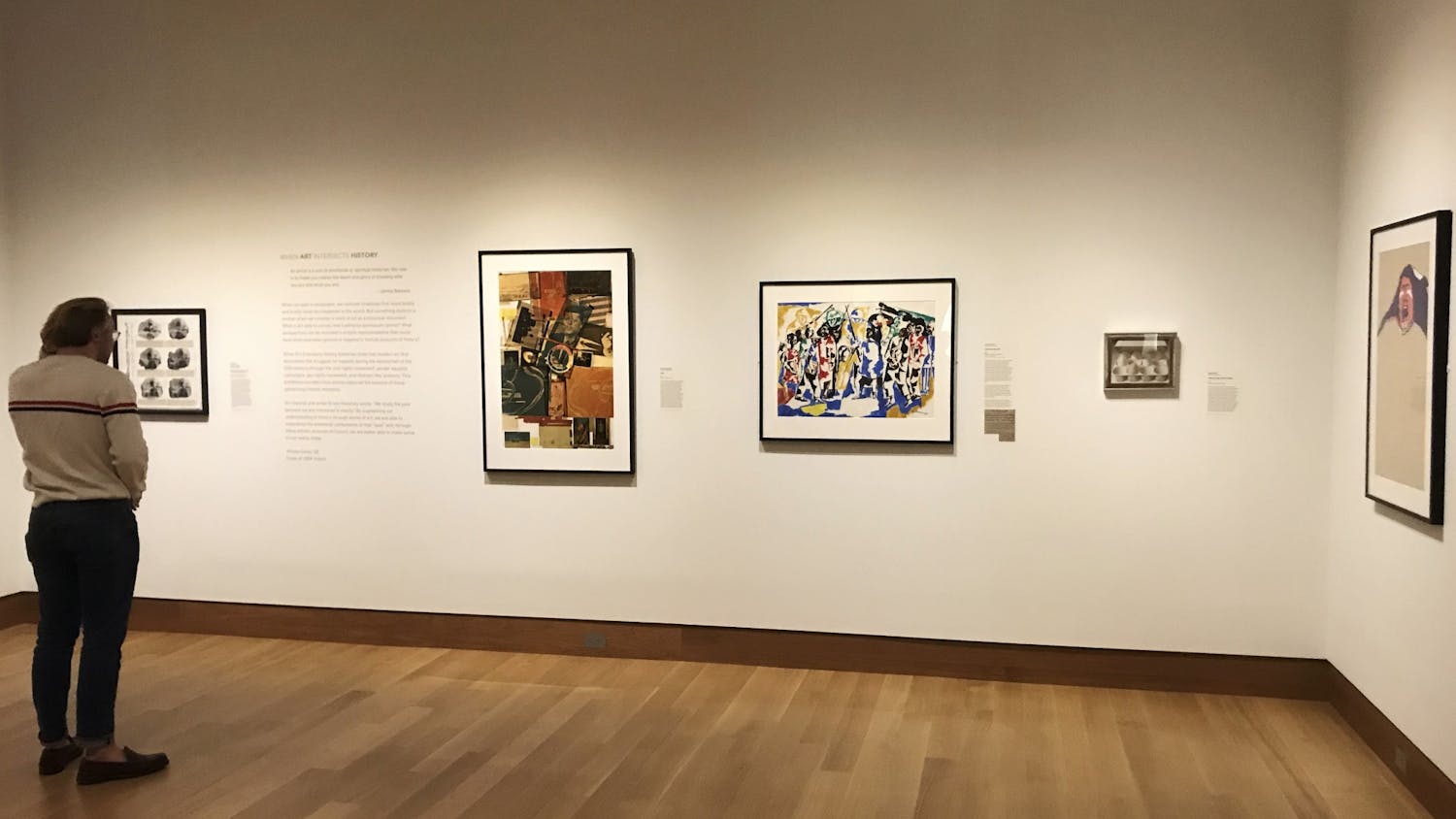In an upcoming gallery talk, Allison Carey ’20, curator of the Hood Museum’s “When Art Intersects History,” will revisit and reexamine her exhibition nearly a year after its debut.
Carey’s exhibition, which compares the use of perspective between art and historical texts, first opened at the Hood last March. Almost immediately after the exhibition went up, the pandemic hit, and the Hood shut down. The museum’s closure prevented Carey from holding a gallery talk, which usually would have let her explain her exhibition and spark discussions on the themes it explores.
“When Art Intersects History” features a small collection of works exploring the ways in which art can both document and influence history. Pieces in the exhibition center around social justice movements in the 1960s and 1970s, including desegregation, the Vietnam War, the resurgence of feminism, the Civil Rights Movement, Native American rights and the gay rights movement, among others.
On Wednesday at 4 p.m., Carey will finally get her chance to answer questions about her exhibition through a virtual talk hosted by the Hood. The event will also feature a live camera feed so that viewers can experience the gallery virtually.
Despite the exhibition’s focus on art and events in the 1960s and 1970s, Carey said she hopes that viewers can still find applications to the present in the selected works.
Amelia Kahl, curator of academic programming and head of the Hood’s internship program, said that the delay in presenting Carey’s exhibition may have inadvertently heightened its relevance in light of current events.
“As 2020 unfolded and we saw Black Lives Matter demonstrations, and we saw more people getting visibly involved in the fight for social justice, her show had an even greater resonance,” Kahl said.
Emily Andrews ’22, a member of the Museum Club, echoed Kahl’s sentiments.
“I think it’s really interesting that [the gallery talk is taking place] soon after the inauguration of Joe Biden,” Andrews said. “I’m choosing to view right now as a kind of period of transition. And so I think that this exhibit corresponds well with that, because a lot of these artworks do show … people trying to grapple with uncertainty.”
Carey said she became interested in curation while studying art history at Dartmouth, and she spent her senior year interning as a student curator for the Hood. “When Art Intersects History” evolved out of Carey’s work in the Hood’s “Space for Dialogue” program, created in 2002, in which student interns can draw from the Hood’s collection to curate an exhibition.
In normal circumstances, Hood interns have the opportunity to showcase their exhibitions to Dartmouth students and the local community through an in-person gallery talk. Although Carey said she was initially disappointed by having to host her gallery talk virtually, she expressed gratitude for the Hood’s efforts to ensure her work did not go unrecognized.
“I think it would have been very easy to brush my show under the rug,” Carey said. “[But] now they’re doing a great alternative to an in-person talk.”
Carey added that from the beginning, the process of curating an exhibition was challenging. With over 60,000 objects from the Hood’s collection to choose from, she recalled having to narrow her exhibition down to approximately 12 works of art. Carey’s interest in exploring social justice through a historical lens helped her hone in on pieces of art and historical moments related to the second half of the 20th century.
“I've always had a deep interest in the intersection of art and equality,” Carey said. “I'm really interested in how art can open up new narratives surrounding different forms of equality and how art can reframe the past to help us understand the present moment we're in right now.”
Carey also added a Dartmouth connection to her project. She searched through The Dartmouth’s archives in the Rauner Special Collections Library, where she found articles describing events related to her selected works of art, such as desegregation at the College. By featuring articles from The Dartmouth in the exhibition, Carey said she hopes that the show will have a more personal resonance for members of the Dartmouth community.
She added that she hopes audiences will walk out of her virtual gallery talk with a new understanding of the possibilities of art and the types of dialogue it can generate in conversation with other mediums.
“This show is my way of trying to very explicitly show why art is important, because art is giving us perspectives that we may not have seen otherwise,” Carey said. “I hope that my show can help a greater public understand that and see the importance of different forms of art and culture and society of the past, present and future.”




